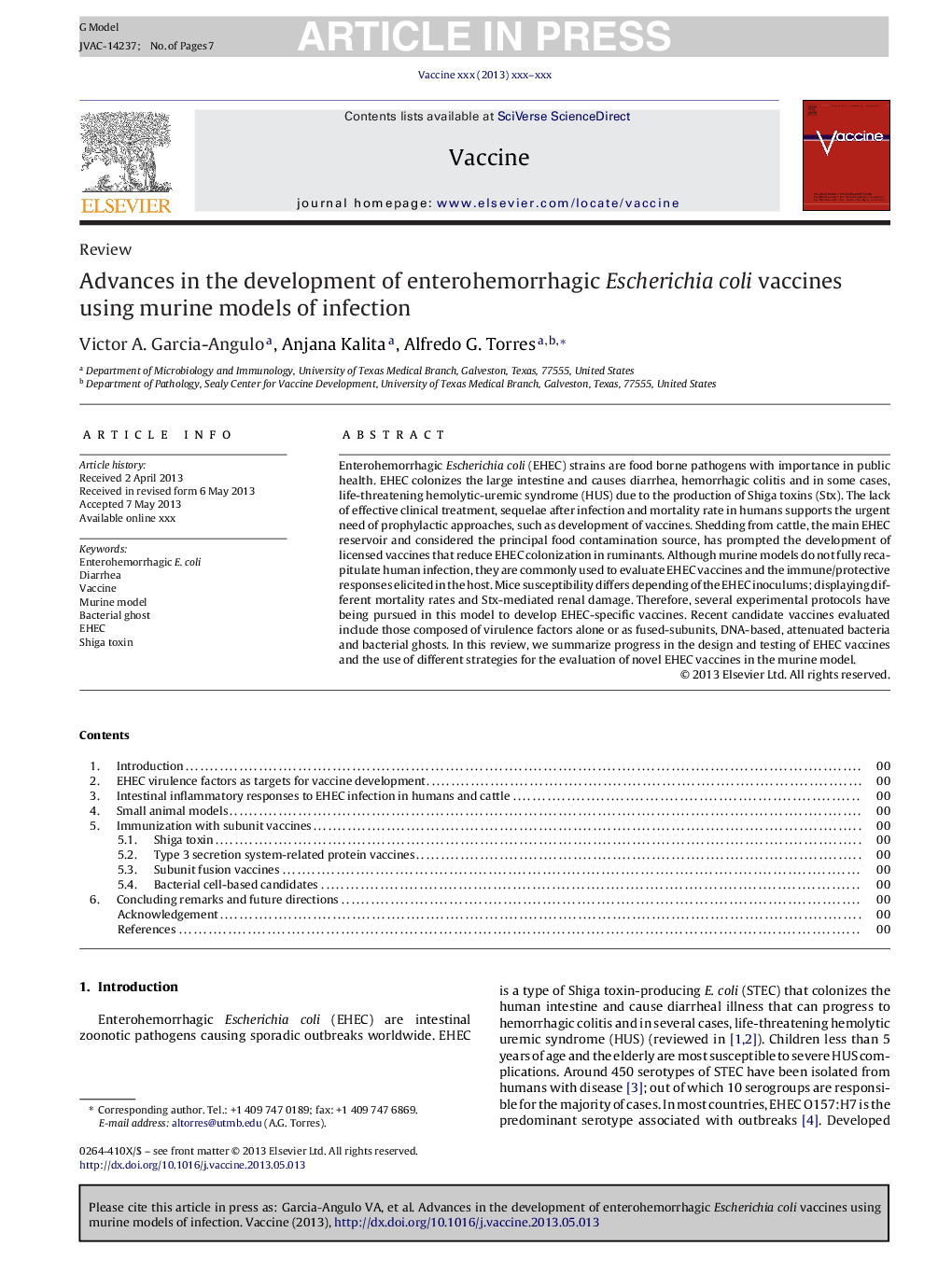| کد مقاله | کد نشریه | سال انتشار | مقاله انگلیسی | نسخه تمام متن |
|---|---|---|---|---|
| 10967971 | 1102857 | 2013 | 7 صفحه PDF | دانلود رایگان |
عنوان انگلیسی مقاله ISI
Advances in the development of enterohemorrhagic Escherichia coli vaccines using murine models of infection
دانلود مقاله + سفارش ترجمه
دانلود مقاله ISI انگلیسی
رایگان برای ایرانیان
کلمات کلیدی
موضوعات مرتبط
علوم زیستی و بیوفناوری
ایمنی شناسی و میکروب شناسی
ایمونولوژی
پیش نمایش صفحه اول مقاله

چکیده انگلیسی
Enterohemorrhagic Escherichia coli (EHEC) strains are food borne pathogens with importance in public health. EHEC colonizes the large intestine and causes diarrhea, hemorrhagic colitis and in some cases, life-threatening hemolytic-uremic syndrome (HUS) due to the production of Shiga toxins (Stx). The lack of effective clinical treatment, sequelae after infection and mortality rate in humans supports the urgent need of prophylactic approaches, such as development of vaccines. Shedding from cattle, the main EHEC reservoir and considered the principal food contamination source, has prompted the development of licensed vaccines that reduce EHEC colonization in ruminants. Although murine models do not fully recapitulate human infection, they are commonly used to evaluate EHEC vaccines and the immune/protective responses elicited in the host. Mice susceptibility differs depending of the EHEC inoculums; displaying different mortality rates and Stx-mediated renal damage. Therefore, several experimental protocols have being pursued in this model to develop EHEC-specific vaccines. Recent candidate vaccines evaluated include those composed of virulence factors alone or as fused-subunits, DNA-based, attenuated bacteria and bacterial ghosts. In this review, we summarize progress in the design and testing of EHEC vaccines and the use of different strategies for the evaluation of novel EHEC vaccines in the murine model.
ناشر
Database: Elsevier - ScienceDirect (ساینس دایرکت)
Journal: Vaccine - Volume 31, Issue 32, 11 July 2013, Pages 3229-3235
Journal: Vaccine - Volume 31, Issue 32, 11 July 2013, Pages 3229-3235
نویسندگان
Victor A. Garcia-Angulo, Anjana Kalita, Alfredo G. Torres,